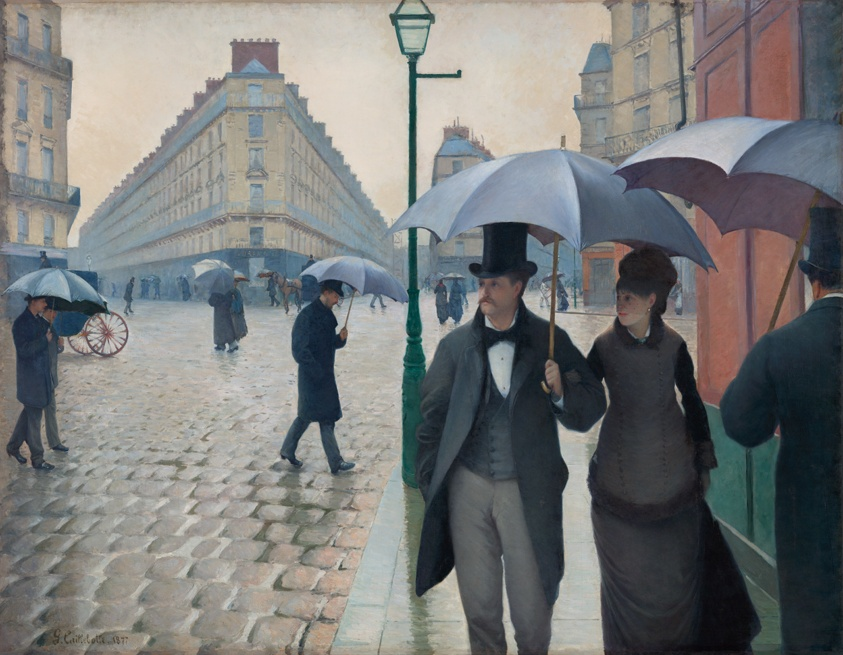Preferences and Perspectives:
The Romantic Era
Introduction
The Romantic Era was a great time of artistic experimentation, leading to various new art styles emerging during this time. In this blog post, I will compare two significant styles from this period, that being Impressionism and Post-Impressionism, by examining four works, two from each style, each from different artists. Additionally, I will explore my personal preferences and the artists' intentions behind these works.
Impressionism
Claude Monet, Impression, Sunrise
Artist: Claude Monet
Title: Impression, Sunrise
Date: 1872
Place Created: Le Havre, France
Title: Impression, Sunrise
Date: 1872
Place Created: Le Havre, France
Monet's Impression, Sunrise is an excellent example Impressionist work. The painting captures the port of Le Havre at sunrise (Gleeson), with a focus on the play of light on the water. The use of calm colors contrasting with the orange sun creates a sense of tranquility. The composition of the piece is relatively simple, with the sun as the focal point, with it's reflection in the water drawing the viewer's eye across the canvas.
Gustave Caillebotte, Paris Street; Rainy Day
Artist: Gustave CaillebotteTitle: Paris Street; Rainy DayDate: 1877Place Created: Paris, France
Caillebotte's Paris Street; Rainy Day offers a different perspective within the Impressionist style. The painting depicts a Parisian street on a rainy day bustling with people, with a sense of depth created by the perspective lines (Caillebotte). The muted color palette and reflections on the pavement convey the mood and atmosphere of the scene. The figures are more defined compared to Monet's other work, yet still exhibit the loose brushwork that is typical of Impressionism.
Post-Impressionism
Vincent van Gogh, The Starry Night
Artist: Vincent van GoghTitle: The Starry NightDate: 1889Place Created: Saint-Rémy-de-Provence, France
Van Gogh's The Starry Night is not just an iconic piece of art, it is also a great example of Post-Impressionism. The emotional intensity thanks to the swirling sky and vibrant color help distinguish this work. Van Gogh's use of thick brushstrokes and the exaggerated movement of the sky evokes a feeling that one feels in dreams. The painting does a stunning job at blending reality with imagination.
Paul Gauguin, Gauguin and Laval in Martinique
Artist: Paul GauguinTitle: Gauguin and Laval in MartiniqueDate: 1887Place Created: Martinique
Gauguin's Gauguin and Laval in Martinique showcases his departure from traditional Western art influences. The painting features Gauguin and fellow artist Charles Laval in the tropical landscape of Martinique (Poindexter). Gauguin's use of bold colors and simplified forms reflects his interest in Primitivism and the desire to capture the exotic surroundings (Poindexter). The painting shows flat areas of color and strong outlines, which is typical of Gauguin's later work.
Personal Preferences and Analysis
Preferred Style: Post-Impressionism
I find myself drawn to Post-Impressionism for its bold use of color, emotional depth, and abstract forms. I absolutely adore Van Gogh's The Starry Night as it captivates me with its swirling patterns and vibrant hues, evoking a sense of wonder and emotional intensity. Similarly, Gauguin's Gauguin and Laval in Martinique intrigues me with it's innovative use of color and form, also giving it a dream-like quality.
- Art Elements:
- Color: Both Van Gogh and Gauguin use bold, expressive colors to convey strong emotions.
- Brushwork: The thick, textured brushstrokes in Van Gogh's work and the flat, graphic style of Gauguin create distinct visual impacts.
- Composition: The compositions are more abstract and symbolic, reflecting the artists' inner experiences and explorations of new influences.
Less Favored Style: Impressionism
While I appreciate the beauty of Impressionism, it is less appealing to me compared to Post-Impressionism. Monet's Impression, Sunrise is serene and calming, but the focus on natural light and color feels less emotionally engaging. Caillebotte's Paris Street; Rainy Day captures a moment in time which is very impressive, yet the overall effect is dull and less dramatic than Post-Impressionist works. Overall, I do not enjoy Impressionism for it's muted colors and down-to-Earth-like style.
- Art Elements:
- Color: Monet and Caillebotte use a varied palette to capture light and atmosphere, but the colors are generally more muted.
- Brushwork: The loose, fluid brushstrokes create a sense of spontaneity but lack the emotional intensity of Post-Impressionist techniques.
- Composition: The compositions are more focused on realistic depictions of everyday scenes, lacking the symbolic depth of Post-Impressionist works.
Intentions of the Artists
Impressionism
Post-Impressionism
Conclusion
In comparing Impressionism and Post-Impressionism, I find myself more enjoying Post-Impressionism due to its focus on vibrant colors, emotional intensity, and symbolic depth. The intentions of Post-Impressionist artists resonate with my appreciation for exploring inner experiences, abstract forms, and breaking the bounds of what we see from the real world. While Impressionism offers a serene and beautiful depiction of everyday life, its naturalism and light-focused approach make it less favored in my perspective.
Sources
Gleeson, Maura. “Claude Monet, Impression, Sunrise.” Smarthistory, smarthistory.org/claude-monets-impression-sunrise/. Accessed 15 July 2024.
Caillebotte, Gustave. “Paris Street; Rainy Day.” The Art Institute of Chicago, Painting and Sculpture of Europe, www.artic.edu/artworks/20684/paris-street-rainy-day. Accessed 15 July 2024.
Paulson, Noelle. “Vincent van Gogh, The Starry Night.” Smarthistory Vincent van Gogh The Starry Night Comments, smarthistory.org/van-gogh-the-starry-night/. Accessed 15 July 2024.
Poindexter, Remi. “Gauguin and Laval in Martinique.” Smarthistory, smarthistory.org/gauguin-laval-martinique/. Accessed 15 July 2024.






Hey Anand, a great discussion of your preferences and perspectives of these two styles from the Romantic era. Impressionism has such a calm and light theme. The two paintings that you provided show good examples of how the dull colors the artist chooses to use help give more importance to other subjects within the works. With Post-Impressionism, the bright, vibrant colors and intenseness of their use add to the works' symbolic meanings. I prefer the colors and aesthetic of Post-Impressionism. I would have to agree this enhanced and provided more ways to express emotions.
ReplyDelete